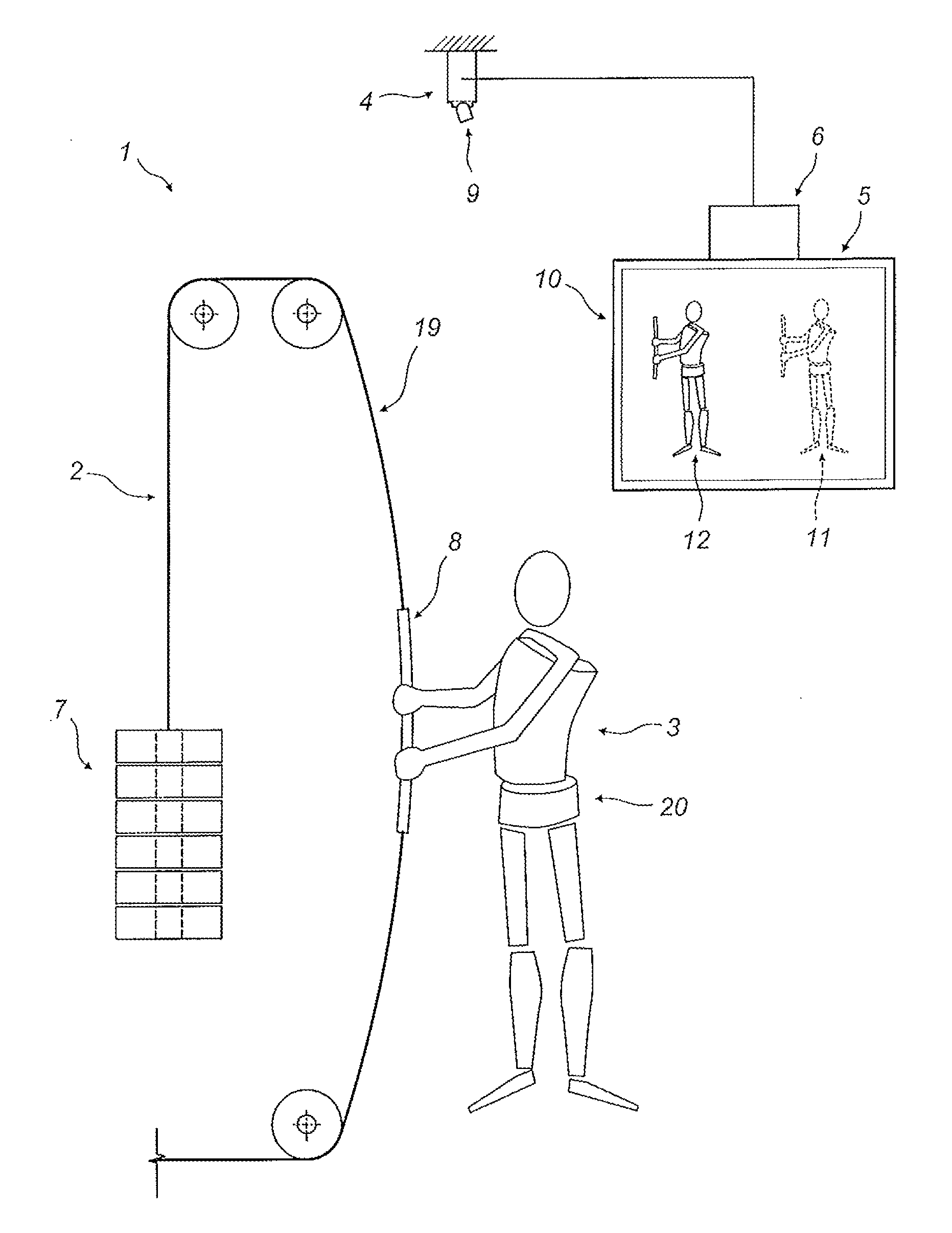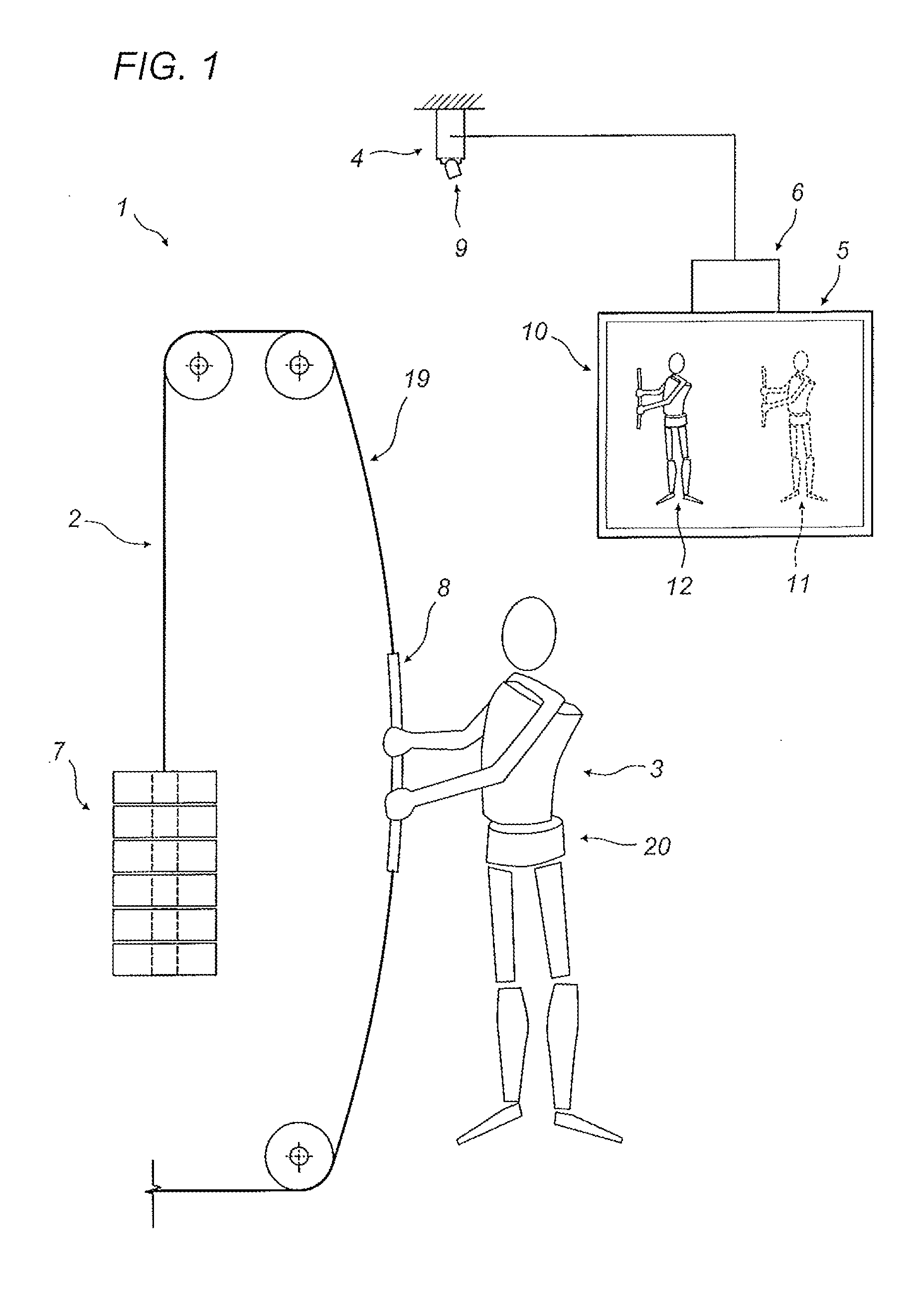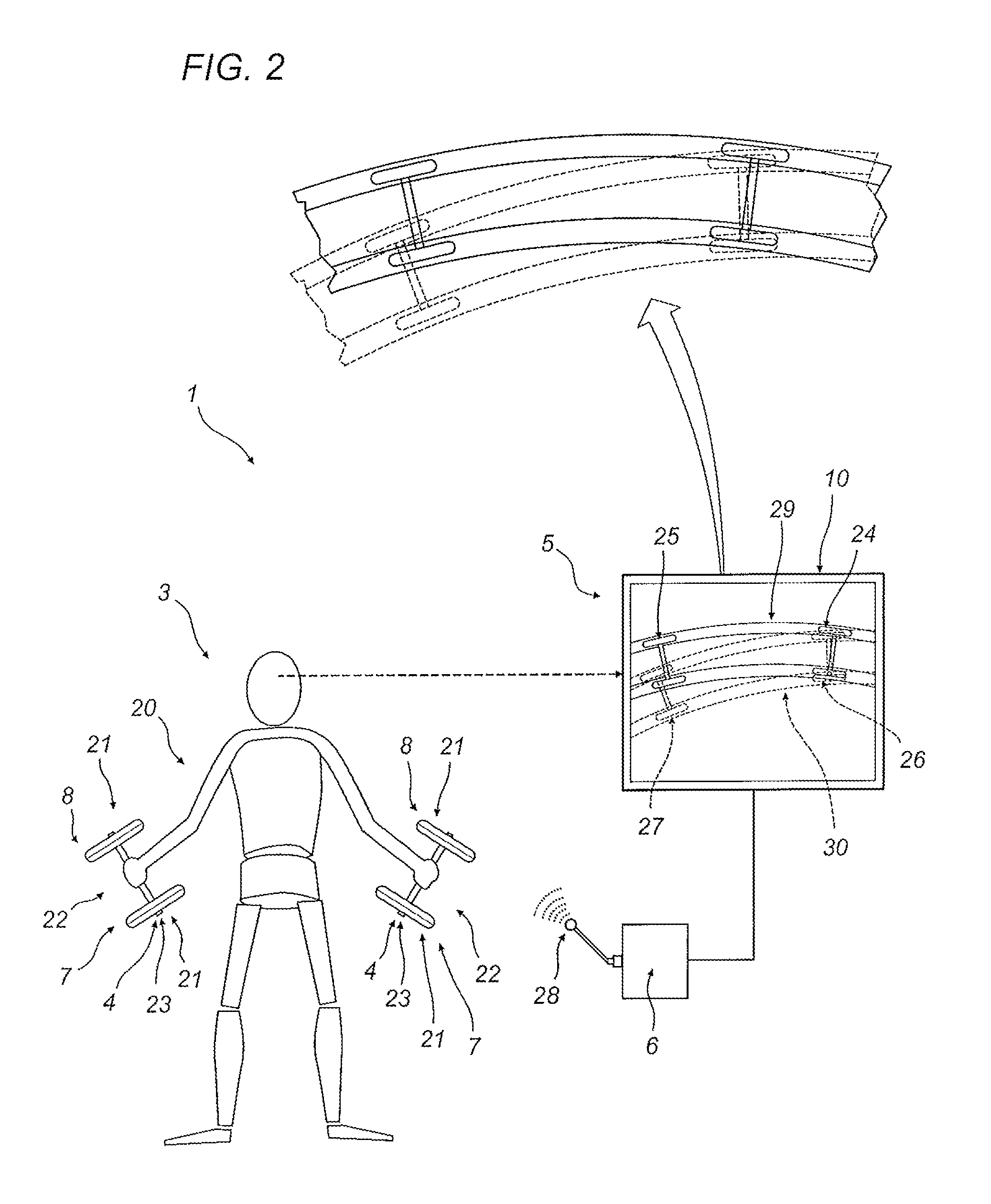Apparatus for the assisted performance of a fitness exercise
a technology of fitness exercise and assisted performance, which is applied in the field of apparatus and a method for the assisted performance of fitness exercise, can solve the problems of inevitably limited attention dedicated to supervising the exercises of any one particular user, the risk of muscle damage, serious degenerative diseases of the spinal column,
- Summary
- Abstract
- Description
- Claims
- Application Information
AI Technical Summary
Benefits of technology
Problems solved by technology
Method used
Image
Examples
Embodiment Construction
[0093]With reference to FIGS. 1 to 4, the reference numeral 1 denotes the apparatus according to the invention for the assisted performance of a fitness exercise, hereinafter also referred to as apparatus 1.
[0094]The term “user” denotes the person who performs an exercise using the apparatus of the invention.
[0095]Further, the expressions “correct exercise”, “exercise performed correctly” and similar expressions are used herein to indicate a fitness exercise which has been performed according to a posture and / or a sequence of movements considered optimal by an expert in the field of physical education, or trainer.
[0096]In light of this, the term “movement” (referred to the feedback supplied by the apparatus) is used to denote the position adopted by the user's body during the performance of the exercise.
[0097]Generally speaking, during an exercise (at least during all dynamic fitness exercises, but excluding isometric exercises) some parts of the user's body are in movement relative...
PUM
 Login to View More
Login to View More Abstract
Description
Claims
Application Information
 Login to View More
Login to View More - R&D
- Intellectual Property
- Life Sciences
- Materials
- Tech Scout
- Unparalleled Data Quality
- Higher Quality Content
- 60% Fewer Hallucinations
Browse by: Latest US Patents, China's latest patents, Technical Efficacy Thesaurus, Application Domain, Technology Topic, Popular Technical Reports.
© 2025 PatSnap. All rights reserved.Legal|Privacy policy|Modern Slavery Act Transparency Statement|Sitemap|About US| Contact US: help@patsnap.com



